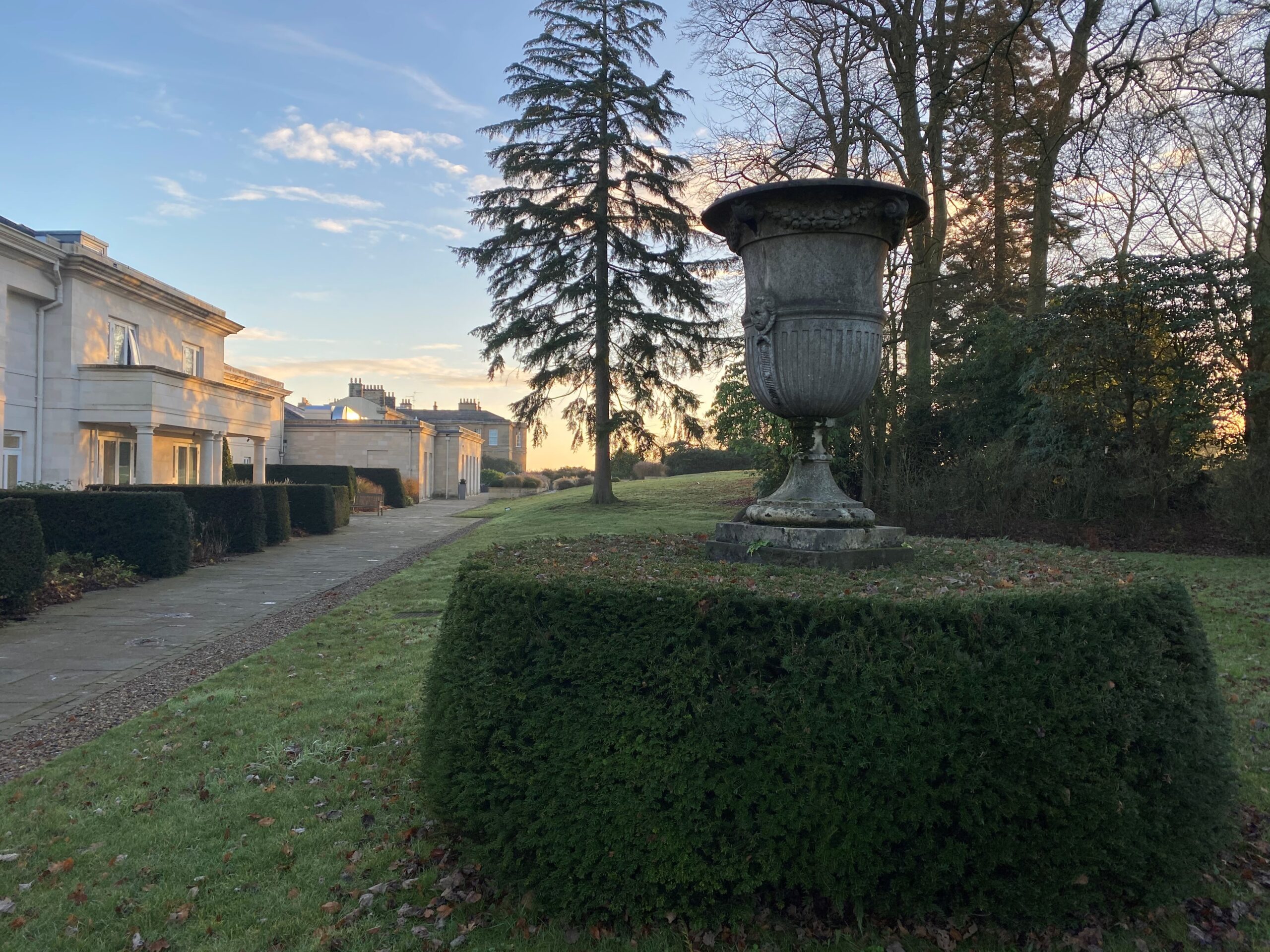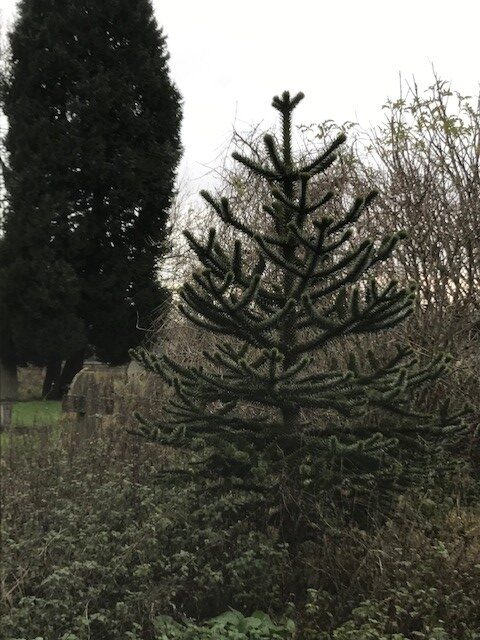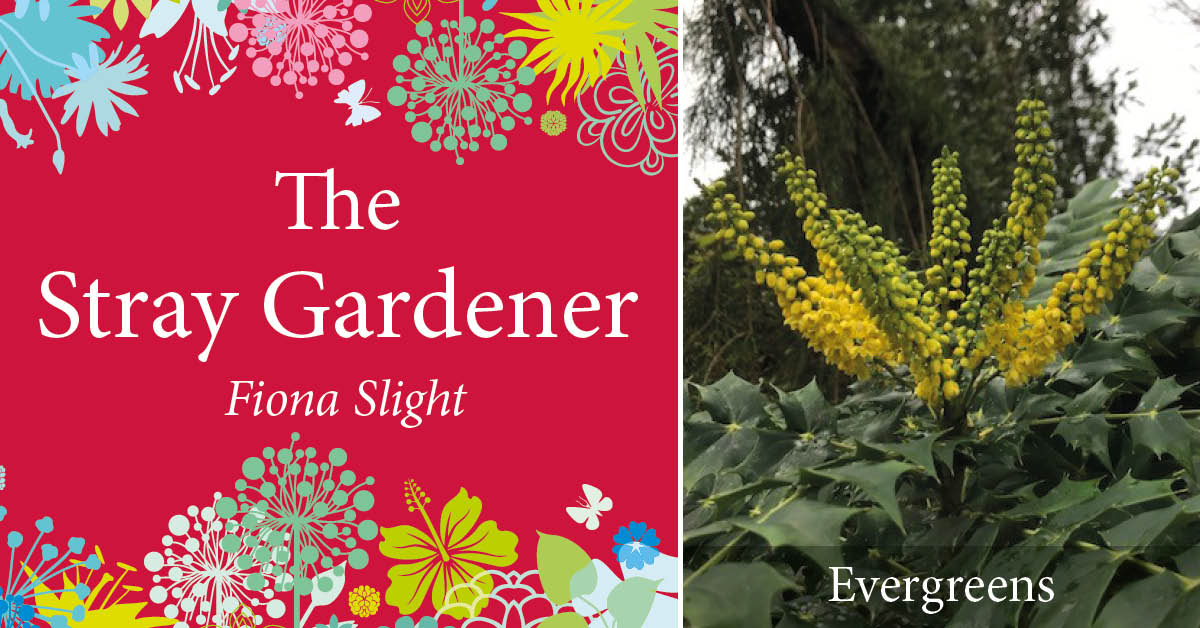 The Stray Gardener is written by Rudding Park’s Kitchen Gardener, Fiona Slight.
The Stray Gardener is written by Rudding Park’s Kitchen Gardener, Fiona Slight.
Fiona has worked in horticulture for over 30 years in the UK and abroad, and specialises in growing fruit and vegetables for fine dining.
At this time of year, when the garden has started to go to sleep and bare branches start to appear, there is a group of plants which keep doing their thing and provide much needed colour and structure during the dark, dismal days of winter. Enter – the evergreens..
Why not spend some time this winter admiring the many evergreens around, and possibly plan to add some more to your garden.
Not only do they have winter colour and are a useful foil to help other plants stand out more, they can provide good shelter and protection all the year round, not only for the garden, but also for wildlife. Evergreens can provide brilliant cover for nesting birds, and their leaf litter on the floor is a perfect home for hibernating animals such as hedgehogs. Many plants provide berries for birds and small mammals such as wood mice and dormice. Most are also very useful for cutting to use in flower arrangements, wreaths and garlands.

A Yew Pedestal at Rudding Park’s Follifoot Wing
Amongst my favourites are Yew (Taxus baccata) and Holly (Ilex aquifolium), not only are they lovely trees in their own right, they are a great choice for hedges and topiary, and are a reliable choice in any garden. Holly has the added advantage of having many different cultivars, variegated and green to add extra interest. They are also very easy to re-shape and prune back hard if they start to get a little out of control. Hollies are dioecious, meaning they need a male and female to produce berries, so that may be something to keep in mind if berries are your thing..

A Monkey Puzzle Tree
For evergreen shrubs to use on walls, you can’t beat Ivy. It does need to be monitored regularly, and is probably not the best option for an unstable wall with loose mortar, but it is fantastic for wildlife, being a great place for birds’ nests. I’ve even seen ducks nesting at the base of an Ivy plant and it also provides a late nectar source for pollinating insects. There are many different cultivars to choose from with large and small leaves and various different colour combinations.
For something a little more exotic looking, try Pittosporum, Myrtle, Mahonia japonica or the Monkey Puzzle tree. Pittosporum are a lovely range of plants with different coloured and textured leaves that can be used in containers and in the border, ranging from small rounded shrubs to small trees. Myrtle (Myrtus communis or Myrtus luma) having beautiful, small, fragrant leaves and small white flowers is extremely attractive to pollinating insects making the whole bush hum with activity in the summer. Mahonia x media cultivars is a winter flowering shrub with large spiky leaves and large yellow flowers that appear in December and January. They positively glow in the winter gloom and have the most amazing fragrance, reminiscent of lily of the valley. The monkey puzzle tree or Araucaria araucana needs no introduction, it’s a wonderful structural tree that stands out, especially in the winter months, just make sure you have room for it, but if you do, what an addition to your garden!
There are many more evergreen plants to consider, so when you get out for some fresh air over the Christmas period, why not pay a little more attention to the evergreen shrubs and trees that play such an important part in our environment, be it wild or cultivated. Enjoy!
Read More:
- The Stray Gardener: Planting tulips for spring colour pops
- Harrogate school boosts environment by planting 500 trees





